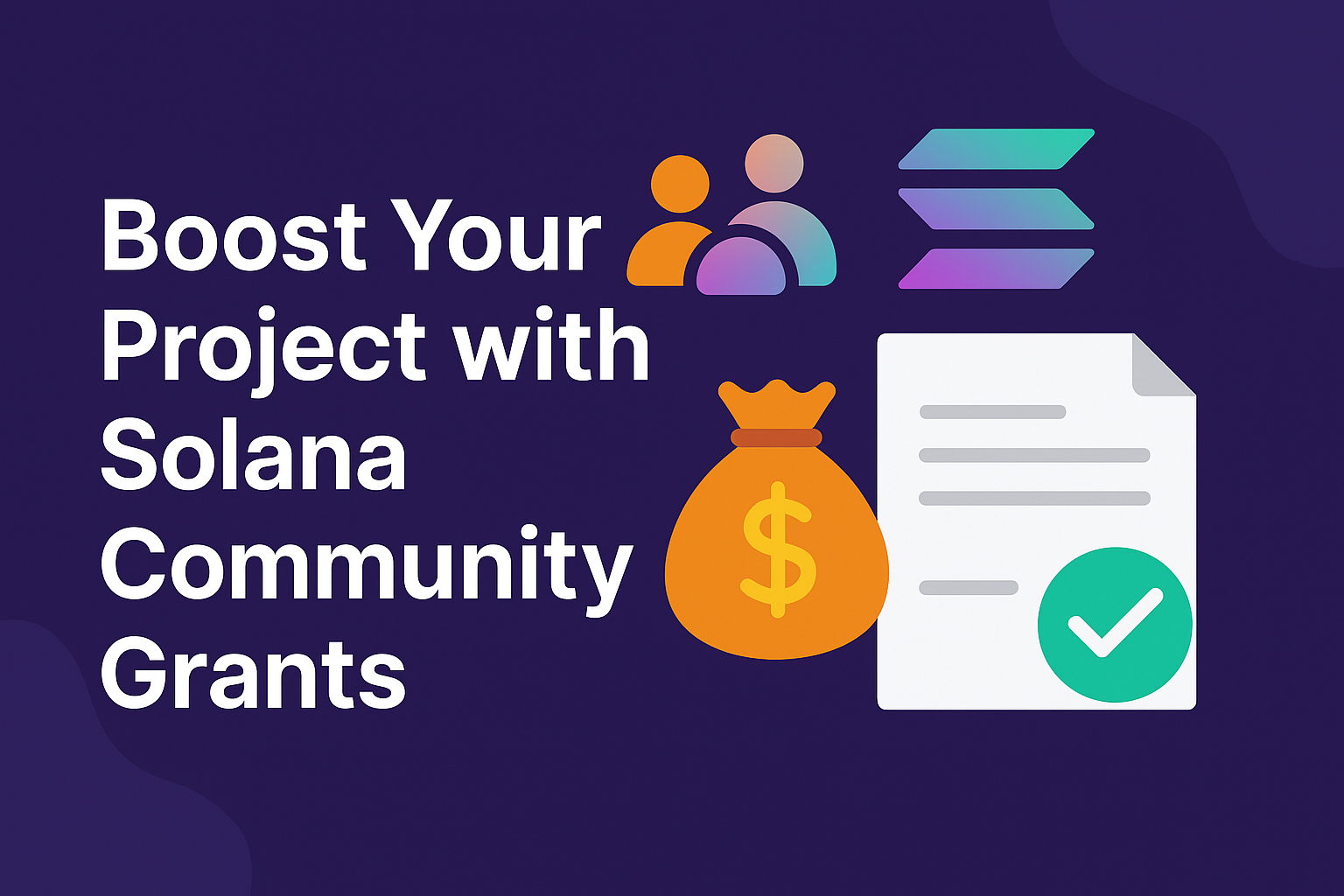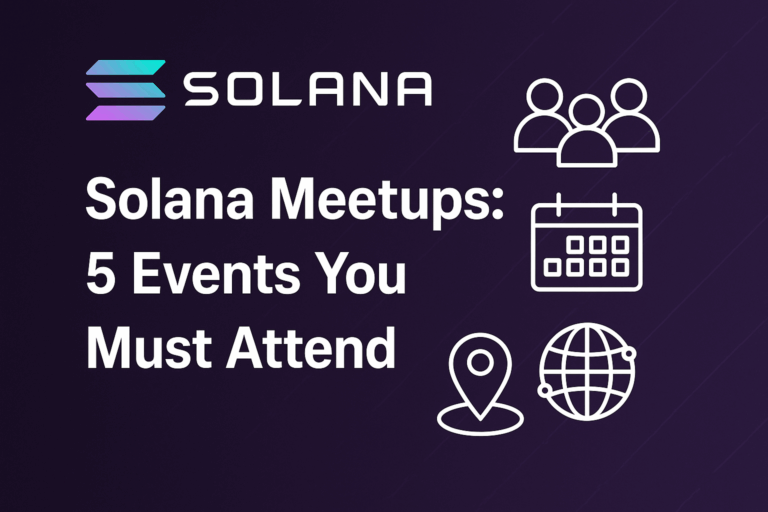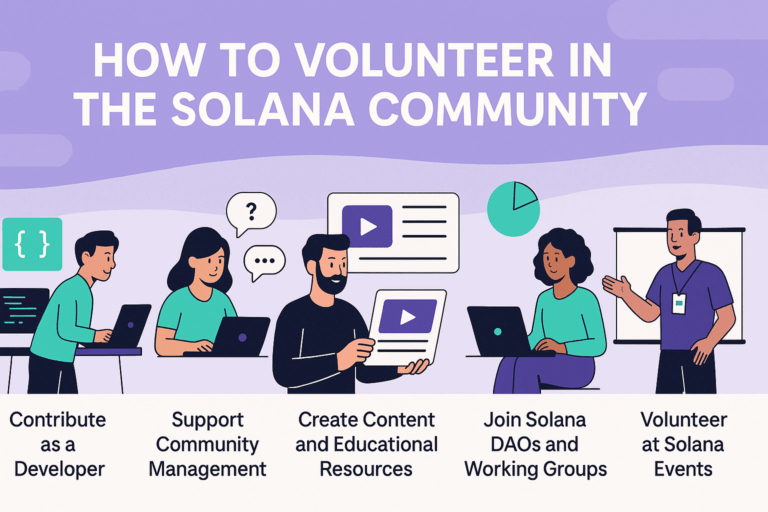Solana Discord Channels and Tips for Engagement
Solana Discords are where the work gets done. If Twitter is the town square and GitHub is the factory floor, Discord is the hallway between them—fast, informal, and always humming at 3 a.m. Whether you’re hacking on a new protocol, moderating a community for a wallet, or looking for your first gig in the Solana ecosystem, the right servers and the right habits can compress months of trial-and-error into a week. This guide maps the major types of Solana Discord channels, explains how to use them without wasting time, and shares playbooks that seasoned builders rely on to turn conversations into shipped features on the Solana blockchain.
Table of Contents
🧭 The Lay of the Land: Types of Solana Discords
1) Official and Foundation-Aligned Servers
These are the “north star” spaces: developer hubs, validator support rooms, hackathon lounges, and announcement channels. They’re the best places to understand how Solana’s roadmap translates into day-to-day building. Expect channels for #dev-support, #validator-help, #hackathons, #jobs, and #ecosystem-updates. If you’re new, lurk here first. Read the pinned messages—many recurring questions (RPC limits, priority fees, token program changes) are answered in detail.
2) Protocol Servers (DEXs, Perps, Money Markets)
Every serious DeFi venue has a Discord. AMMs and order books split channels by product (e.g., #swaps, #clmm, #orderbook), while perps venues add #risk, #funding, and #status. Lending protocols keep #risk-parameters, #listings, and #liquidations channels. Joining these servers turns you into a “power user” because you see parameter changes before they land on a blog post.
3) Infrastructure, Oracles, and Tooling
RPC providers, indexers, block explorers, and oracles live here. You’ll find SDK release notes, outage reports, and example code for streaming accounts or decoding logs. If your app touches price feeds, memcmp filters, or webhooks, these channels are pure gold. Set notifications to “only @mentions” so your phone doesn’t melt.
4) Wallets, Aggregators, and Onramps
Wallet servers combine user support with developer integration channels. Aggregators (for swaps, intents, or perps routing) often host #integrations rooms where you can learn how to request quotes, simulate routes, or expose your pool to their router. A quick back-and-forth here can save you days of misreading an API doc.
5) Builder Collectives and Regional Communities
Think of these as “Solana coworking spaces” with regional flavors—Middle East, India, Turkey, Vietnam, Europe, LatAm, and beyond. You’ll see #bounties, #translations, #meetups, and #showcase. If English isn’t your primary language, these spaces are invaluable for getting feedback in your native tongue while staying plugged into the global Solana ecosystem.
6) Research and Data Rooms
Some servers focus on modeling risk, backtesting strategies, or surfacing dashboards. Expect threads on oracle latency, liquidation cascades, and cross-venue basis trades. Bring charts, not vibes. If you can frame a question with a dataset, you’ll get serious attention.
⚙️ Context That Makes You Dangerous: Solana Fundamentals for Better Questions
Accounts and Programs, Not “Contracts”
On Solana, programs are stateless code; accounts hold the data. Every instruction declares which accounts it will touch, enabling parallel execution. This matters in Discord because helpers will ask, “Which accounts does your instruction require?” or “What are the account metas and their mutability?” If you paste a transaction signature along with the list of account addresses, you’re already ahead of 90% of posts.
PDAs (Program-Derived Addresses)
PDAs are deterministic addresses generated from seeds and a program ID. They let programs “own” accounts without private keys. If your escrow or vault logic relies on PDAs, include the seeds and bump in your question. Many “my withdraw fails” issues reduce to a mismatch in PDA derivation between client and program.
Compute Units and Priority Fees
Solana’s runtime meters compute units (CU). When you compose instructions—say, a swap, repay, and LP add—your transaction can hit the CU limit. The fix is often twofold: request more compute (via a compute budget instruction) and attach a small priority fee so it lands promptly. In Discord, share your exact CU budget and the error (“Exceeded maximum compute units” vs. “Account not rent exempt”) so helpers don’t have to guess.
Local Fee Markets
Fees are localized to the state you touch. If a hot NFT mint is congesting a specific account range, your lending repay elsewhere might still be cheap and instant. This is why mentors often say, “Add 1–3 microlamports/compute unit for safety.” In practice, you only pay up when it truly matters—closing a perp, topping collateral, or sniping a tight order book.
SPL Tokens and Token Extensions
Most assets on Solana follow the SPL Token Program, with newer “Token Extensions” adding features like transfer hooks and confidential transfers. If your token has a hook (say, a compliance check), tell people in your Discord post—many “it works on devnet but fails on mainnet” mysteries are hook-related access issues.
Anchor vs. “Native” Solana
Anchor wraps Solana programs with macros, IDLs, and client generators. If you’re using Anchor, include your IDL snippet and #[account] constraints. If you’re writing native Rust, paste your account deserialization and invoke_signed calls. In both cases, logs are critical: program logs, not just client exceptions.
🧪 Mini Case Studies: How Real Builders Use Discord
Case Study 1: The “Exceeded CU” Mystery
Problem: A team bundled a swap, repay, and LP add in one transaction. It failed intermittently. Their first Discord message was: “It’s broken. Help!”—which got no traction.
What worked: They returned with a short description, a transaction signature, compute budget, priority fee, and a copy-paste of program logs. A maintainer spotted that simulated CU usage was near the limit and suggested splitting the flow or bumping the budget. The team added a compute budget instruction and a modest priority fee. Success—and a useful post others could search later.
Case Study 2: PDA Derivation Gone Wrong
Problem: Withdraws worked on localnet but failed on mainnet. The dev posted code snippets with PDA seeds, but not the bump. A volunteer asked for the exact find_program_address usage; the bump differed between client and on-chain derivation after a refactor.
Outcome: Aligning seeds + bump fixed it. The thread was later pinned as a canonical “PDA checklist” for newcomers.
Case Study 3: Liquidity Strategy Iteration
Problem: A liquidity manager wanted to optimize an LST/SOL pool. They screenshotted returns, but without context.
What worked: They returned with tick ranges, inventory change, fees earned, and a volatility estimate. A market maker in the channel suggested narrower bands during Asian hours and a scheduled rebalance before US CPI prints. Performance improved, and the conversation turned into a lightweight runbook other LPs still use.
🧵 Anatomy of High-Impact Discord Messages
For Developers (Bug or Feature Help)
Use this template, tweak as needed:
Context: building a swap + repay + LP add flow on the Solana blockchain. Tooling: Anchor 0.x, rustc 1.xx, Node 18.x, @solana/web3.js 1.xx RPC: [provider], commitment=confirmed Tx signature: [paste link] Compute budget: 1.4M CU; Priority fee: 2 microlamports/CU Error: "Exceeded maximum compute units"; program logs below. What I tried: split into two txs; same failure on the second leg. Question: better pattern to compose these, or CU hotspots I should avoid?For Integrations (Partners and Aggregators)
Context: want to expose our pool to your router (decentralized apps on Solana). We have TS SDK, on-chain program ID, and an indexer for events. Need: pointers to your quoting API and route simulation. Timeline: aiming for devnet integration this week, mainnet next. What we bring: $X liquidity, 24/7 monitoring, and clear health endpoints.For Validators and Infra
Node: Ubuntu 22.04, 64-core, NVMe RAID, 256GB RAM Validator: vX.Y.Z Observed: spikes in block production time around slot N Logs: [attach snippet] Questions: tuning for accounts-db, geyser plugin compatibility, and JIT compilation flags worth enabling?🔧 Channel Archetypes and How to Use Them
#announcements
Low noise, high signal. Toggle “all messages” for a handful of core servers (e.g., your wallet, the DEX you use, your primary money market). Announcements carry parameter changes—think collateral factors, fee switches, or maintenance windows—which directly affect your strategy with SOL.
#dev-support / #sdk / #api
Describe environment, share logs, attach small repro repos. Keep messages tight. If your post is longer than a screen, move the deep dive into a thread and summarize in the parent message.
#risk / #governance / #proposals
Perfect for long-form reasoning. Bring data: borrow utilization, liquidation density by LTV bucket, oracle update cadence. Proposals that ship usually include clear tables and a rollback plan.
#validators
Cut to the chase. Slot height, version, CPU steal, disk IOPS, network throughput. Screenshots of Grafana or logs beat paragraphs of guesswork.
#bounties / #gigs / #contribute
Great for newcomers. Complete one small task well; maintainers notice. If you’re a writer or translator, offer to turn a long Discord thread into a searchable guide—teams love this.
🛡️ Security and Hygiene
Assume All Cold DMs Are Scams
Legit teams don’t solve support in DMs. Keep conversations in public channels or threads. If someone insists on a screen-share, decline and ping a moderator.
Verify Domains and Program IDs
Before signing anything, verify the website, program ID, and mint addresses from official sources. On Solana, transactions are fast—which is wonderful for shipping and terrible for mistakes.
Role Gating and Bot Hygiene for Your Own Server
Use verification gates to slow down bots. Create separate roles for announcements, developers, and validators so users can subscribe to only what they need. Keep webhook permissions locked down.
📚 Solana-Specific Troubleshooting You’ll See in Discord
“Account Not Rent Exempt”
New accounts need a minimum balance (rent exemption). If you’re initializing PDAs or token accounts, fund them properly or add a step to top up. Share the lamports balance when asking for help.
“Constraint Violation” (Anchor)
Anchor’s #[account] constraints do a lot of heavy lifting. When you see a constraint error, post the exact constraint and the account you passed. Nine times out of ten, a signer or mut constraint mismatch is the culprit.
“Blockhash Not Found”
Transactions must land before the blockhash expires. If your client queues too many operations, refresh the blockhash and consider splitting the flow. Also check that your priority fee is not zero during busy periods.
🧰 Engagement Playbooks (Choose Your Persona)
For New Builders
- Pick three servers to start: a core developer hub, your favorite wallet, and one DeFi protocol you use daily.
- Read pinned messages and search the channel before posting.
- Contribute small things—typo PRs, code comments, or a quick “how to” snippet. Proof-of-work unlocks faster help.
For DeFi Power Users
- Subscribe to #announcements in your trading venues and set mobile notifications.
- Create a personal “changes log”: when fees, oracles, or risk parameters move, write one line about how it affects your positions.
- Share fills and route screenshots when things look off. Routers improve when users provide edge cases.
For Protocol Teams
- Pin canonical answers and turn the best threads into documentation. Discord is a search engine if you curate it.
- Label channels by job-to-be-done (#get-help, #build-with-our-sdk, #integrate-our-router) instead of internal team names.
- Host office hours in your users’ time zones, not just yours. The Solana ecosystem is global.
📈 Trends You’ll Notice in 2025 Servers
Actions and “Link-Native” Transactions
Teams increasingly share Actions links (“blinks”) that let users execute swaps, stake, or repay loans directly from a message. In Discord, that turns announcements into one-click operations. Moderators often pin these for common tasks.
Token Extensions and Compliant Flows
More assets on Solana use transfer hooks or other extensions. You’ll see new channels dedicated to integration guidance (“which accounts do I pass to satisfy the hook?”). Expect more “compliant but composable” patterns as decentralized apps on Solana interact with these assets.
Operational Maturity in Risk Channels
Risk threads look more like traditional finance: VaR snapshots, liquidity heat maps, and oracle staleness alerts. Bring data to the table and you’ll shape parameters instead of merely reacting to them.
📝 A 10-Second Checklist Before You Hit Send
- Goal: One sentence—what outcome do you want?
- Context: Tooling versions, program IDs, network (mainnet/devnet/localnet).
- Evidence: Transaction signature, logs, screenshots.
- Attempts: What you tried already.
- Scope: Ask one question per message; move tangents to a thread.
🧭 Suggested Channel Map for Your First Week
- Day 1: Join an official developer hub and read #start-here, #dev-support, and #announcements. Post an introduction with what you’re building on the Solana blockchain.
- Day 2: Join two protocol servers you actually use (a DEX and a lending market). Subscribe to their #status and #risk channels.
- Day 3: Join an infrastructure server (RPC or indexer). Test their example scripts; keep one working snippet in your toolbox.
- Day 4: Hop into a regional builder collective. Ask for feedback on a 30-second demo video.
- Day 5: Answer someone else’s question. Teaching cements your own understanding.
💡 Practical Examples You Can Copy
Example: Posting a Minimal Repro
// client.ts (trimmed) const ix = program.methods .rebalance({ targetBps: 5000 }) .accounts({ vault, authority, tokenProgram, systemProgram }) .instruction();
const tx = new Transaction()
.add(ComputeBudgetProgram.setComputeUnitLimit({ units: 1_400_000 }))
.add(ix);
tx.feePayer = wallet.publicKey;
tx.recentBlockhash = (await connection.getLatestBlockhash("finalized")).blockhash;Add this above your logs and you’ll get credible answers fast.
Example: Asking for Risk Parameter Context
We propose reducing LTV on LST-SOL from 70% to 65%. Rationale: 30d vol up 40%, liquidity skewed to top 2 pools. Data: [chart], [depth table], [oracle update cadence]. Rollback: revert to 70% if utilization spikes > 90% for 48h.Example: A Partnership Pitch That Gets Replies
Hello team — we operate a SOL on-ramp used by 20+ projects. We want to integrate your router to deepen liquidity for our pairs. We can ship a working devnet integration this week; looking for a quick review of our quoting path and expected slippage bounds. Happy to contribute a "Getting Started" page to your docs post-launch.🌍 Why Discord Works So Well for Solana
Solana moves quickly because it’s designed that way—parallel execution, short finality, and cheap transactions. Discord mirrors that velocity: quick feedback loops, composable conversations via threads, and an institutional memory in pins and search. The more you treat Discord like a collaborative IDE—tight commits (messages), clear diffs (edits), searchable history—the more you’ll ship. And the more you ship, the more the Solana ecosystem rewards you with opportunities, from grants to gigs to cofounders.
✅ Summary and Next Steps
Summary: The best Solana Discord channels fall into a few buckets—official developer and validator hubs, protocol servers (DEXs, perps, lending), infrastructure and oracle rooms, wallets and aggregators, builder collectives, and research spaces. To get value, bring context: account lists, program logs, compute budgets, and exact errors. Use Discord’s strengths (threads, pins, search) and respect everyone’s time with minimal reproducible examples. Keep security tight: verify domains and program IDs, avoid DM “support,” and segment roles on your own server. As Solana evolves—with token extensions, Actions-driven UX, and more professional risk tooling—Discord remains the place where decentralized apps on Solana go from idea to production.
Call to action: Tell me who you are—a new builder, DeFi power user, validator, or content creator—and I’ll share a one-week Discord engagement plan tailored to your goals, complete with three servers to join, five channels to watch, and a first post you can copy-paste today. The sooner you start showing your work in public, the sooner SOL-denominated opportunities will find you.



Comments